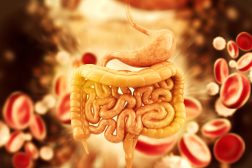Definition
noun
A taxonomic superclass of a diverse group of fish that have skeletons composed primarily of bone tissue
Supplement
Osteichthyes is taxonomic superclass of the phylum Chordata (chordates) and includes groups of fish that have skeletons mainly composed of bone tissues. Chordates are primarily characterized by having a notochord, dorsal hollow nerve cord, muscular post anal tail, and pharyngeal slits for at least some period of the life cycle of an animal. The phylum Chordata has three subphyla: Vertebrata (vertebrates), Tunicata (tunicates), and Cephalochordata (cephalochordates). The vertebrates include various animal groups such as fish, amphibians, reptiles, birds, and mammals. A fish pertains to any gill-bearing animals lacking limbs with digits. Osteichthyes (bony fish) is one of the taxonomic superclasses of fish. The others are chondrichthyes (cartilaginous fish) and Agnatha (jawless fish).
Osteichthyes includes the ray-finned fish (Actinopterygii) and lobe-finned fish (Sarcopterygii). The bony fish group is paraphyletic with land vertebrates, and in some classification schemes the tetrapods are considered to be members of the osteichthyes for this reason.
Most bony fish belong to the Actinopterygii. There are only eight living species of lobe-finned fish (Sarcopterygii) including the lungfish and coelacanths. Some species of lobe-finned fish have jointed bones. There are over 29,000 species that belong to superclass Osteichthyes, which make them the largest class of vertebrates in existence today.
Word origin: Greek ὀστέον (ostéon, “bone”) + ἰχθῡ́ς (ikhthū́s, “fish”)
Scientific classification:
- Kingdom: Animalia
- Phylum: Chordata
- Superclass: Osteichthyes (Huxley, 1880)
Other common name(s):
- bony fish
See also:
- Chondrichthyes
- fish
- ichthyology
- chordate







